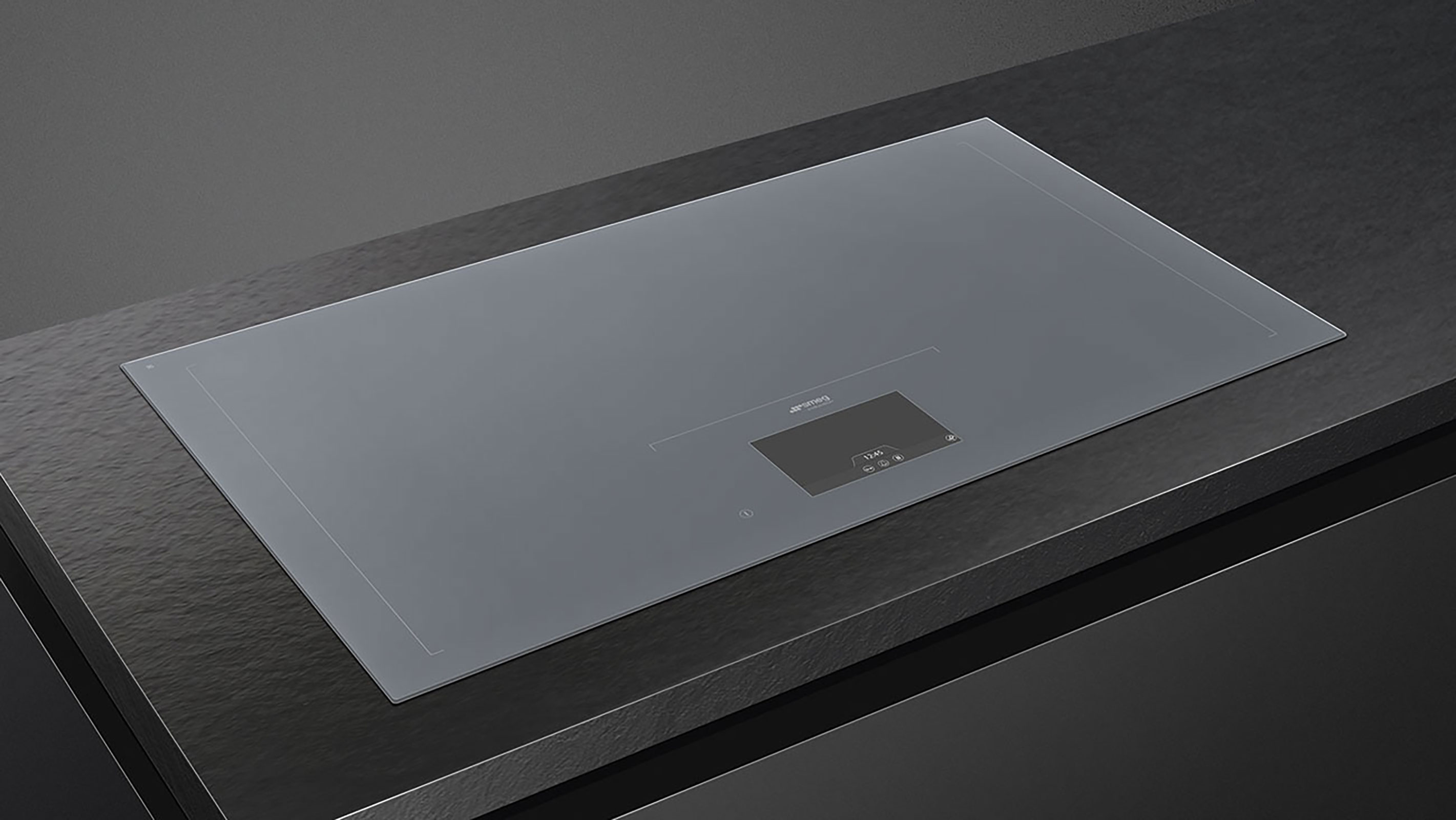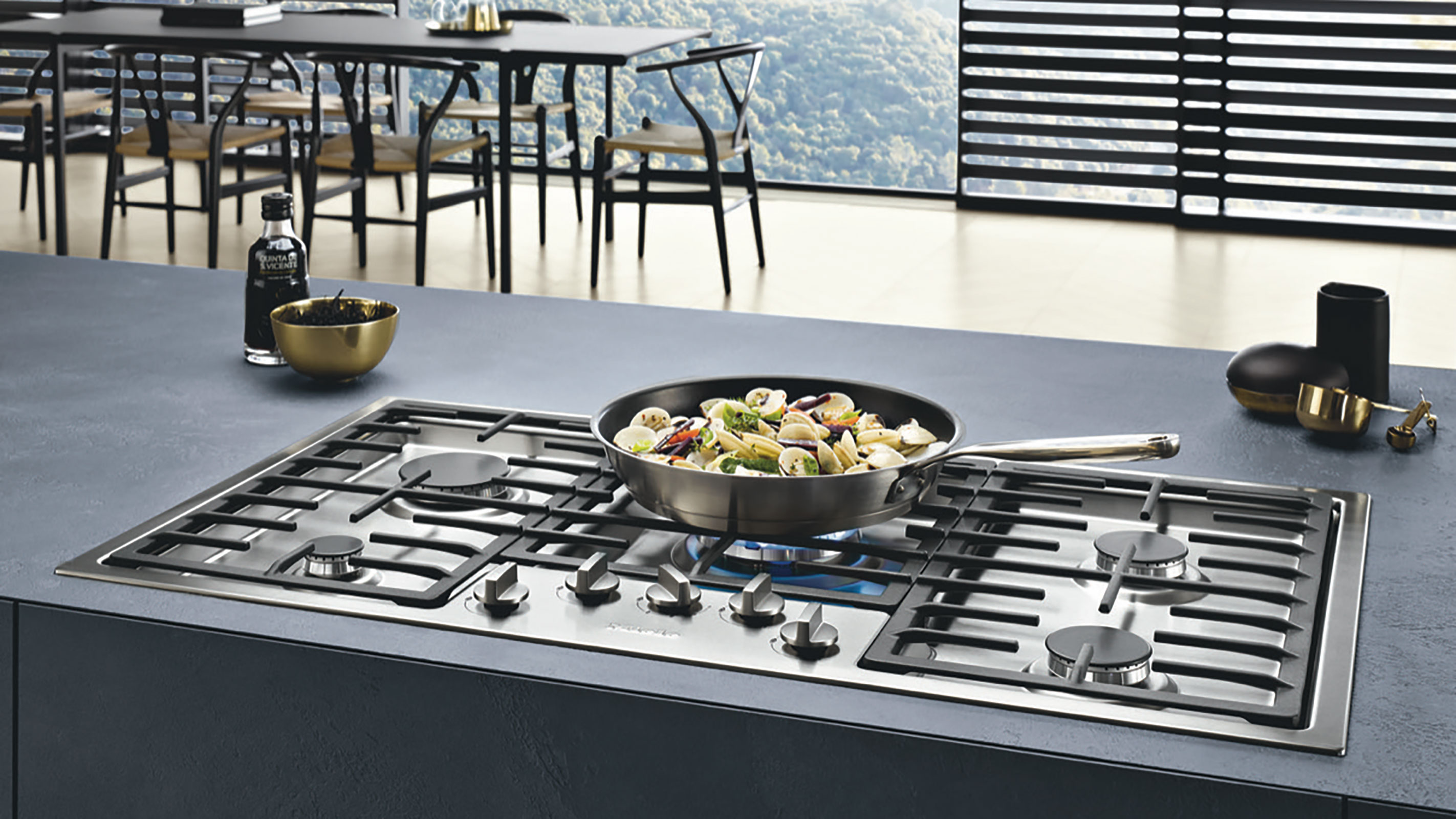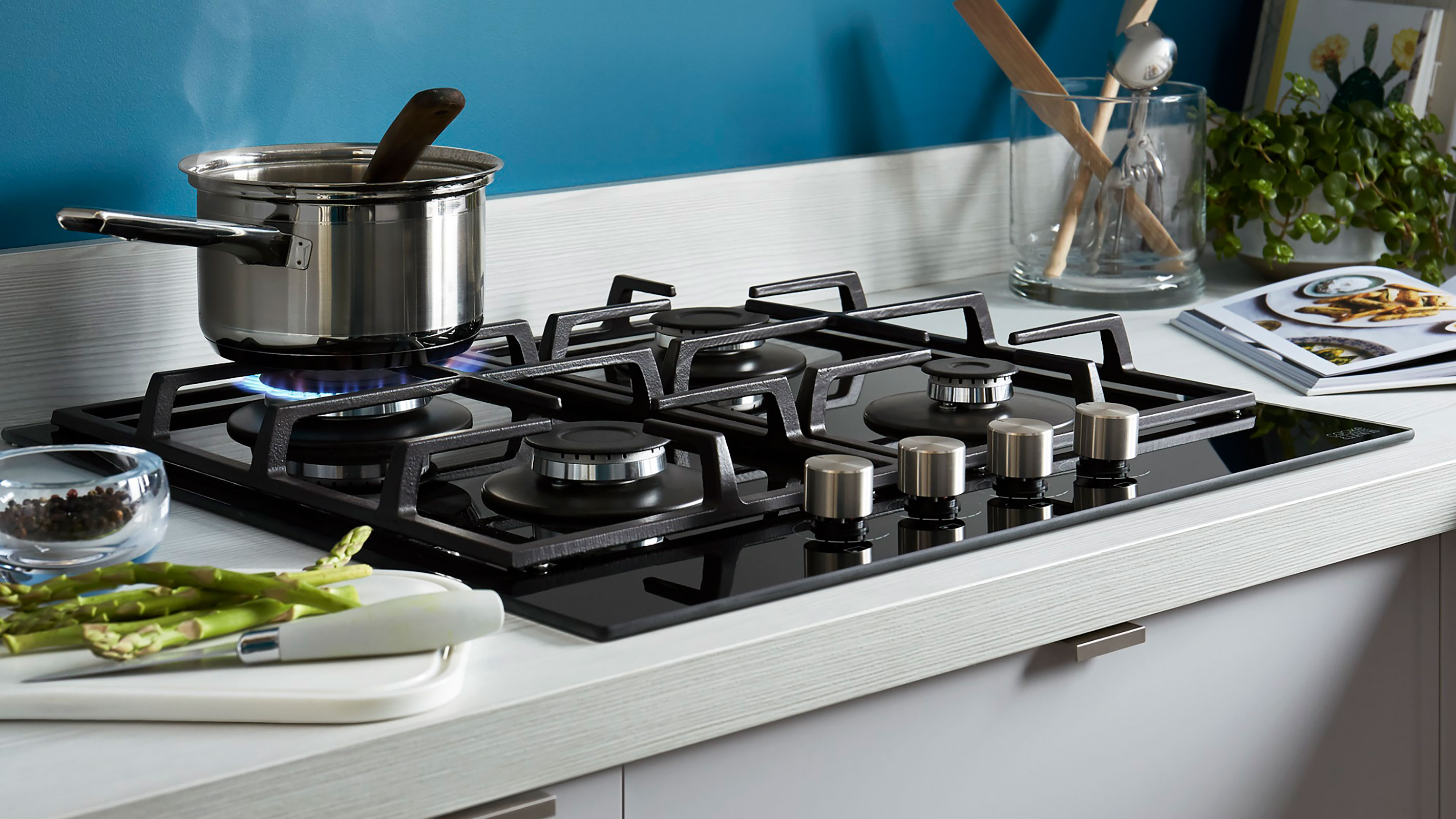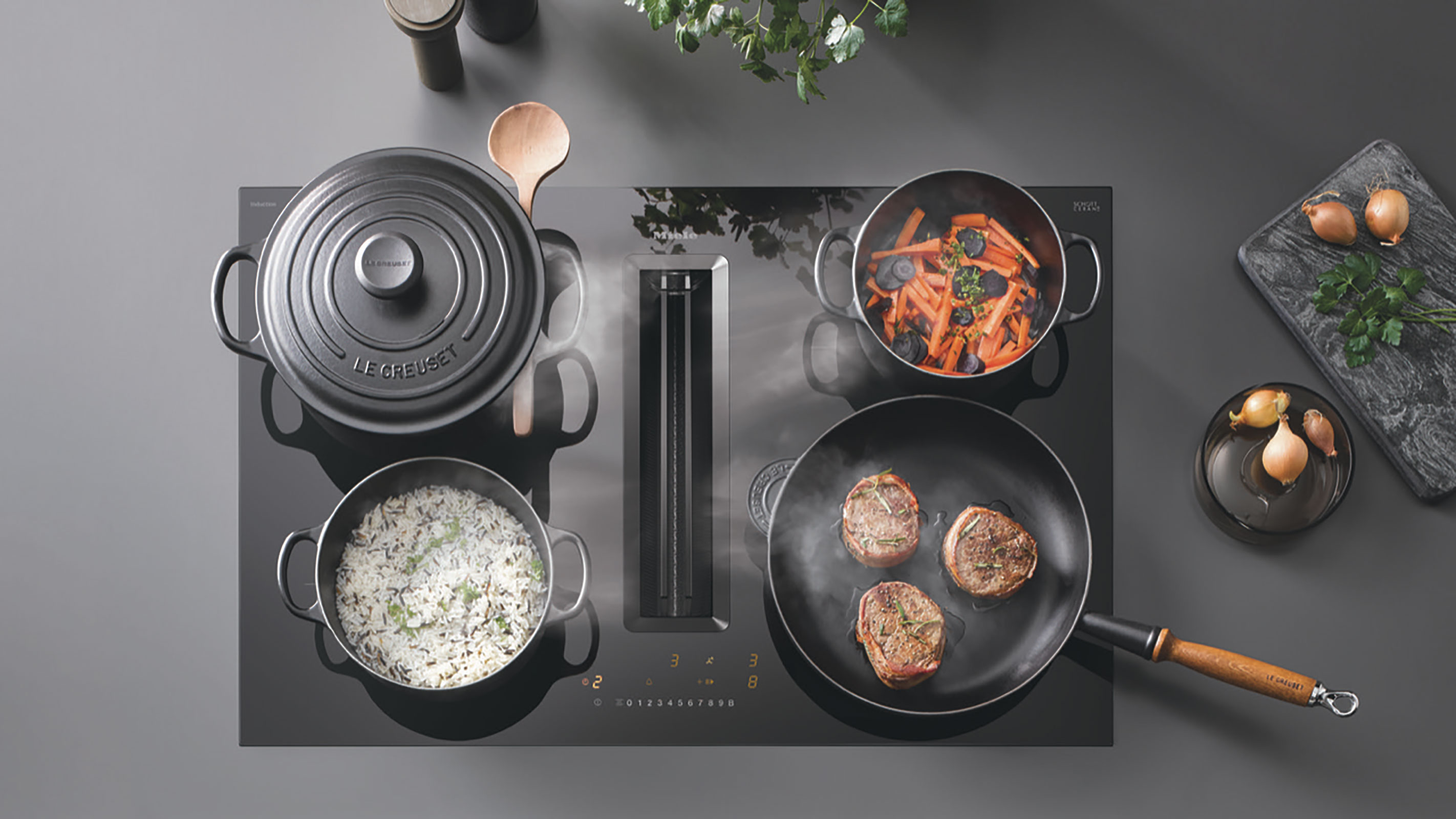Induction vs gas hobs: Which is the best option for you?
Induction vs gas hobs — both offer many benefits, particularly when compared to ceramic hobs, but which will be most suited to you and your kitchen requirements? Our guide will help you choose

The great cooking debate: induction vs gas. Which should you choose in order to enjoy preparing meals in your kitchen?
In the world of ovens and hobs, both are actually brilliant options for casual and keen cooks alike, making choosing between the two a difficult decision.
Hobs can either be bought separately, for fitting into the worktop or a kitchen island, or will come as part of a freestanding cooker, complete with the oven.
Here, we take a look at the pros and cons of gas and induction hobs, chat to the experts to get their opinions and explain the costs involved with both of these options.
Induction vs gas: What's the difference?
The two are actually very different, both in the power sources they use as well as the way in which they heat food.
Gas hobs, as the name suggests, use gas as their power source, while induction use electricity. This means that gas hobs are not an option for those without a mains gas supply, although it is possible to have gas hobs converted to run off LPG.
While gas hobs mean cooking over an open flame, what is an induction hob? Induction hobs feature 'induction coils' that sit beneath the glass surface of the hob. These coils are made from copper wire that, as electricity runs through them, create a high-frequency, alternating magnetic field. When a pan is placed on the hob, the magnetic field creates a reaction between the bottom of the pan and the cooking zone. This means that only the pot or pan heats up while the cooktop remains cool.
Bring your dream home to life with expert advice, how to guides and design inspiration. Sign up for our newsletter and get two free tickets to a Homebuilding & Renovating Show near you.
Even in the relatively short time that induction hobs have become an option, there have been some rapid developments in their technology.
"Smeg’s latest induction hob launch, the Area Induction Hob, has developed technology which means you can simply place pans where convenient and the Autopot detection function will automatically recognise the position of the pots throughout the hob, saving the user from having to activate the correct area," explains John Davies, head of marketing at Smeg UK.

What are the advantages of a gas hob?
When it comes to types of cooker, for many, nothing beats cooking on gas — in fact many professional chefs refuse to cook on anything else. The naked flames of a gas hob make the cooking experience very intuitive as there is a very obvious visual indicator on heat levels, making it unnecessary to get to grips with the controls of an induction hob.
"Gas is a visible heat source, making it easy to control, as well as adjust," agrees Tom Hopper, kitchens manager at Miele GB. "Its design is also one that we are probably most familiar with in the kitchen. Cooking with gas provides an intensive heat that can be great for Oriental style cooking; as well as dishes that require high temperatures, such as flash frying."
Gas hobs no longer have to be chunky or too traditional in their design either.
"As with induction, design is equally important, with traditional styles that previously rose out of the work surface being replaced with more modern, flush or near-flush glass designs that sit inline with the worktop for a sleeker look." says Tom. "This is great if you desire this type of hob but also want a minimal design.”
Another benefit of gas hobs is that fact that you can use pretty much whatever type of pan your heart desires to cook with, unlike induction hobs which require 'induction-friendly' pots and pans.
You also have the option to charr or flambé food directly over the naked flame and, lastly, they are super robust and withstand a good amount of clattering and banging without fear of scratching or damaging the hob top.
Simple gas hobs, with four burners, can be picked up for as little as around £90.
To summarise, the pros of gas hobs are:
- Near instant control
- Offer intuitive cooking experience
- Possibility of a number of cooking methods
- Robust design
- Can be used with all pots and pans
- Will work should electricity supply fail
- Cheaper to buy than induction hobs

What are the disadvantages of a gas hob?
Of course there are also some downsides to gas hobs.
Their design can make them a little tricker to clean than sleek, flush induction hobs and it can be necessary to remove pan cradles to reach lodged in dirt or spills.
Although their heat is almost instant, they do take a little longer to 'get going' than induction hobs and tweaking the heat can take a little more time than with the more precise induction method.
Gas hobs also work best when the pan size is perfectly matched to the burner — otherwise heat will be wasted. This is quite unlike induction, which will only heat the area directly beneath the pan, no matter what its size.
Those designing a home for a young family or in households with cats that have a tendency to jump up on to work surfaces, need to consider the safety implications of the naked flames associated with gas cooking.
Cons of gas hobs:
- Naked flame can be a safety concern
- More parts to clean than induction
- Heat the room and space around the pan, as opposed to the pan contents only

What are the advantages of induction hobs?
Induction hobs are now incredibly popular, with both professional chefs and homeowners alike — and for very good reason.
"It is fast becoming the preferred choice, says Smeg's John Davies. "They are very streamlined, easy on the eye and generally considered safer around children, as well as being more efficient as they can heat quicker than traditional gas options.
"Many induction hobs are now more high-tech than ever and come with a variety of different cooking zone layouts to suit the individual cooking needs and multiple power levels for different types of cooking.
"Induction hobs are also easier to clean and look very minimal and sleek," continues John. "Induction hobs are also considered to have more benefits for families because they are much safer around children due to them only heating up on the ring where the pan has been activated, with no live flame."
"Induction hobs are a great choice for passionate cooks, thanks to the precise temperature controllability, fast heat up times, automatic pan recognition and boosting functions for when an extra increase in temperature is required," says Miele's Tom Hopper. "They can be particularly good if you like to create delicate dishes. Melting chocolate on an induction hob, for example, is easier as the temperature can be so specifically controlled and there is no need for a water bath. They also fit well within the modern kitchen ideas of today, offering a sleek, minimal look that is very easy to keep clean, thanks to the ceramic glass.
"The technology used with induction cooking can help produce desired professional results when cooking in your kitchen at home," continues Tom. "TempControl from Miele is one of the latest innovations to be added to the induction range. Using power levels and sensors to detect the temperature of the pan, it automatically regulates the power on the hob to ensure that the food being cooked is fried at a constant temperature, preventing the dish from burning if the power is not turned down.
"And, finally, induction hobs are ideal if you have young children, as it is the pan that heats up and not the hob, meaning no scorching hot surfaces are ever exposed. Induction also has other family friendly benefits such as safety locks to prevent the hob being turned on accidentally," concludes Tom. "Look out for models with a ‘flush fit’, meaning that the hob is enclosed by the work surface for a sleek finish with no exposed edges. Induction hobs can also be connected wirelessly to a hood for intelligent extraction, creating the ideal cooking environment that is free from grease, smells and vapours."
So, the main benefits of induction hobs are:
- Instant heat control
- Sleek, modern appearance
- Easy to clean
- Safe as only the pan gets hot
- Many technological advances being made

What are the disadvantages of induction hobs?
With so many benefits to cooking with an induction hob, it is hard to believe there is any room for a few disadvantages.
"The very small downside of induction hobs is that they may not work with your old pans," says Tom Davies. "If the base of the pan won’t stick to a magnet, then the pan won’t work."
Ideally, pans need to be flat-bottomed too — and some models will switch off automatically or beep if the pan is removed for a quick shake.
Induction hobs are also more expensive than gas or electric ceramic hobs and some models can produce a 'humming' sound when running. There is also the fact that their glass surface can become scratched if you are not careful.
Basic four burner induction hobs start at around £180, rising to £5,000 at the upper end of the price scale.
The main cons of induction hobs include:
- Expensive to buy (less so than they once were though)
- Can scratch
- Takes time to get used to heat controls
- Require induction-friendly pots and pans
Are induction hobs more energy efficient than gas?
In short, yes, they are. This is because, unlike when cooking with gas, heat isn’t lost between the burner and the pan (the transferring process.)
With gas hobs, a substantial amount of energy is lost to the air surrounding the cookware, whereas in the case of induction, only the pots and pans themselves are heated, which ultimately means energy and cost savings (and, of course, faster cooking times).

What are the other options?
Should you decide that neither gas or an induction hob is right for you, what are the other options?
You could go down the ceramic hob route. When weighing up ceramic vs induction hobs, those trying to save pennies should be pleased with the much lower price tag of ceramic, as well as the fact that they won't have to invest in new pans should their old ones be unsuitable.
However, they could be left frustrated by the unresponsiveness of this type of hob and the slower cooking times.
The best news is that if you really can't decide between gas or induction, you could always opt for both.
"Smeg has also designed a mixed fuel hob which gives people the benefits of both gas and induction hobs," says Tom Davies. "Smart pan detection ensures cookware is heated effectively wherever its placed and it includes enhanced functions for slow melting, maintaining temperature, and for controlling sauces and soups when boiling."
Natasha was Homebuilding & Renovating’s Associate Content Editor and was a member of the Homebuilding team for over two decades. In her role on Homebuilding & Renovating she imparted her knowledge on a wide range of renovation topics, from window condensation to renovating bathrooms, to removing walls and adding an extension. She continues to write for Homebuilding on these topics, and more. An experienced journalist and renovation expert, she also writes for a number of other homes titles, including Homes & Gardens and Ideal Homes. Over the years Natasha has renovated and carried out a side extension to a Victorian terrace. She is currently living in the rural Edwardian cottage she renovated and extended on a largely DIY basis, living on site for the duration of the project.

